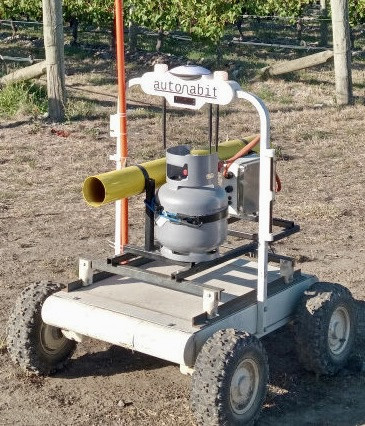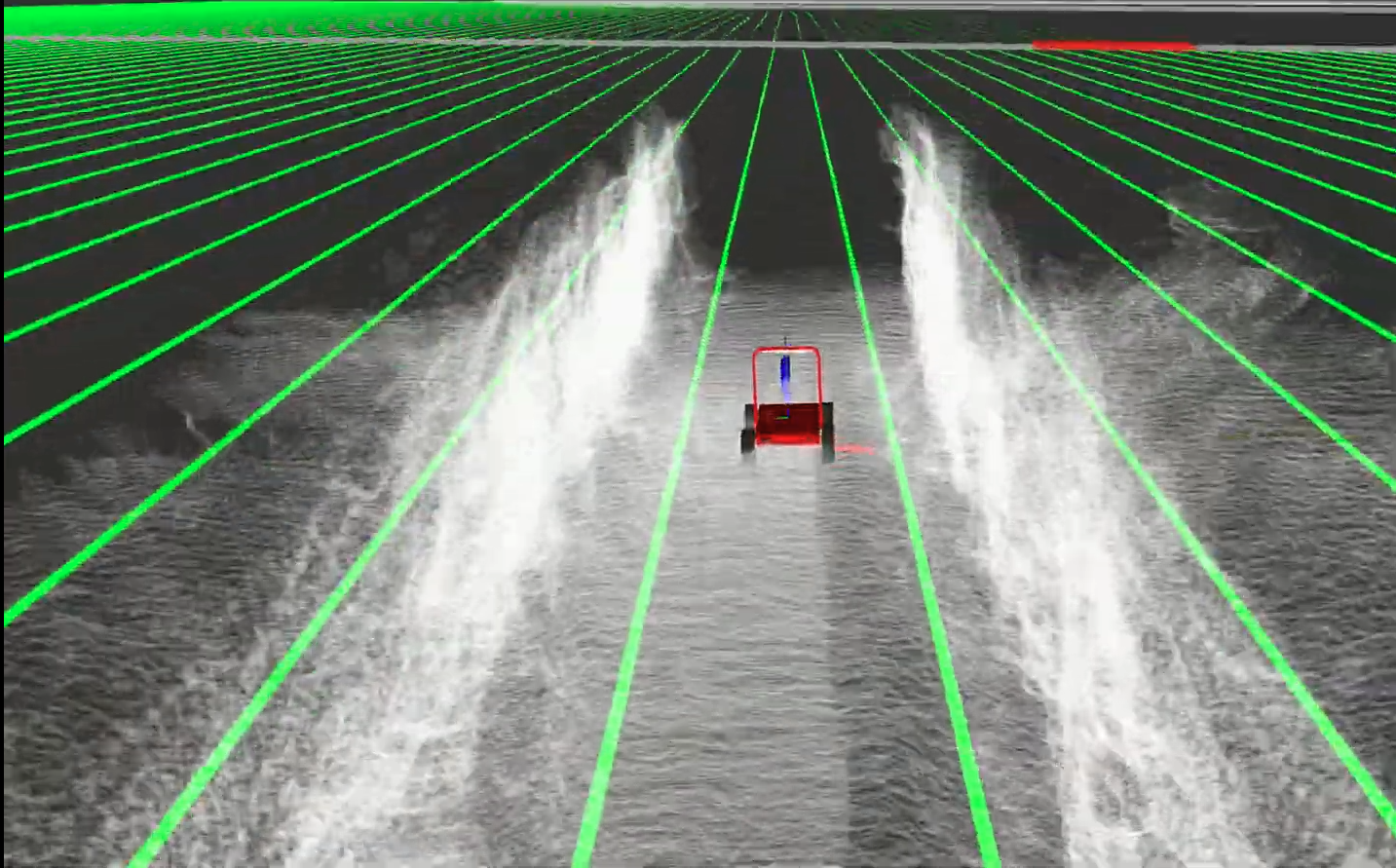About Autonabit
Autonabit is an innovative agritech company based in New Zealand, developing small autonomous robots to support agricultural operations. Their flagship application focuses on bird scaring, electric mowing, and vine scanning– straightforward use cases that introduce automation to growers without requiring changes to existing farming practices or layouts. Autonabit has successfully deployed 31 robots and plans to at least double its fleet over the coming year.
What makes Autonabit’s solution unique is its balance of affordability, autonomy, and simplicity. By starting with a relatively low-risk task—bird deterrence—they have been able to gradually introduce more advanced functionality, including orchard and vineyard maintenance tasks. Their robots help growers adopt automation incrementally, making high-tech tools more accessible and practical.
The Challenge Autonabit Faced

Autonabit’s primary challenge was enabling robust, reliable autonomous navigation in diverse outdoor agricultural environments—vineyards, orchards, and open fields—where conditions are highly variable and full of unpredictable obstacles like buckets, ladders, and uneven terrain. While GPS provides general navigation, it cannot handle real-world complexities like obstacle detection and avoidance.
According to founder Josh McCulloch, previous attempts using monocular cameras, basic LiDAR systems, and RealSense D455 cameras proved insufficient. These solutions were hindered by factors such as limited environmental robustness, susceptibility to water damage, and inadequate support for stereo vision and onboard intelligence. Autonabit needed a rugged, smart vision system that could serve as the robot’s eyes and brain—capable of perceiving its surroundings, identifying objects, and adapting in real time.
Why Luxonis?
Autonabit selected the Luxonis OAK cameras for several reasons:
Environmental Robustness: IP-rated enclosures ensure the cameras withstand outdoor exposure, including rain, dust, and mud.
Versatile Onboard Sensors: Stereo depth sensing, color imaging, and an integrated IMU provided a compact all-in-one sensing package. The wide lens variant is perfect for capturing objects in the peripheral, making it ideal for autonomous navigation
Modular, Scalable Ecosystem: From initial prototyping with OAK-D-Lite to deploying OAK-D PoE Wide units, the modular architecture and consistent API made it easy to scale without refactoring code.
Seamless ROS Integration: Luxonis’ SDK and examples accelerated development and reduced the need for custom drivers.
Onboard AI Capabilities: Edge processing on the device enabled object detection models to run directly on the camera, eliminating the need for additional high-power external compute.
Autonabit’s decision to use Luxonis cameras was an evolutionary process. As other sensors failed or proved inadequate, Luxonis cameras consistently stood the test—functionally and economically.
Development Process
Autonabit’s journey with Luxonis began with simple proof-of-concept trials using OAK-D-Lite. From there, the team transitioned to commercial-grade OAK-D PoE Wide units for deployment on their robots. Integration was straightforward thanks to Luxonis' high-quality documentation and flexible API.

The Luxonis camera became a central part of Autonabit’s hardware stack. Beyond traditional stereo vision, Autonabit began deploying custom object detection models to identify buckets and ladders—common yet problematic orchard obstacles that stereo vision alone struggled to perceive.
Using Luxonis’ built-in IMU allowed Autonabit to remove redundant hardware components, simplifying their design and reducing costs. Moreover, the addition of synchronized flash lighting and RTK GPS enabled a new generation of plant-scanning devices, helping map vineyards with centimeter-level accuracy..
The Results
Autonabit’s adoption of Luxonis cameras has delivered substantial benefits across performance, efficiency, and user experience:
Reliable Obstacle Avoidance: Robots now detect obstacles like low-lying buckets and narrow ladder legs that would previously result in failure or manual intervention.
Simplified Architecture: The built-in IMU replaced standalone inertial sensors, saving both cost and integration effort.
Improved Field Debugging: Depth and stereo imagery are streamed to a custom dashboard for real-time monitoring and easier debugging, improving transparency and trust among growers.
Enhanced Customer Experience: By sharing the stereo depth images with the users, growers now understand how the robots perceive their environment, leading them to proactively adjust pruning and mowing practices to improve robot efficiency.
Versatile New Products: A standalone, flash-enabled camera system with RTK GPS is being tested for plant health monitoring and vineyard mapping. This data will streamline future robot deployment and unlock new service offerings.
Autonabit's robots have just crossed 70,000km of distance with Luoxnis cameras as the primary sensor for collision avoidance, closing in on twice around the world!

What It’s Like Working with Luxonis
Autonabit praised the low-friction development experience with Luxonis, highlighting:
Developer-Friendly APIs: Easy to get started and powerful enough to scale.
Robust Documentation and Examples: Served as reliable references throughout prototyping and development.
Seamless Hardware Evolution: Migrating from USB to PoE or adding new features like lighting and GPS didn’t require major software changes.